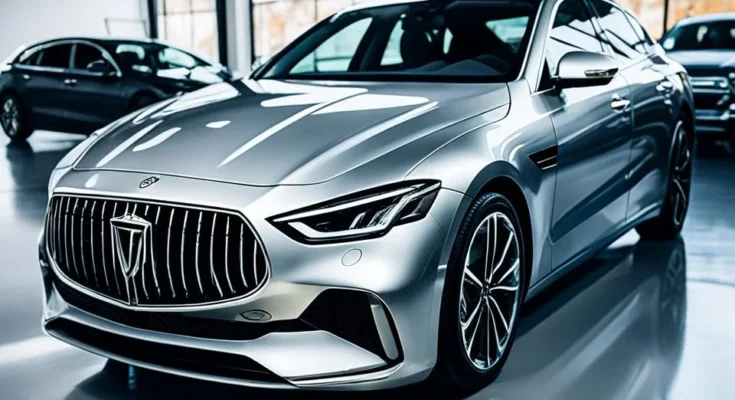Key Takeaways
- Understand the significance of comprehensive auto insurance coverage to safeguard your financial well-being
- Explore liability coverage options, including bodily injury and property damage protection
- Discover the benefits of collision and comprehensive policies to cover damages to your vehicle
- Learn about deductibles and policy limits, and how to find the right balance for your needs
- Recognize the importance of uninsured and underinsured motorist coverage for added protection
Understanding the Importance of Auto Insurance Coverage
Auto insurance is more than just a must-have for driving legally. It’s a key safety net for your finances if something unexpected happens on the road. If you’re in a crash, your car gets damaged, or you’re hit by an uninsured driver, the right auto insurance coverage can be a lifesaver.
Why Adequate Coverage Matters
Picture being in a major accident with the other driver’s fault, but they barely have any liability coverage. Without enough insurance, you could end up paying for the medical bills and car repairs yourself. This could ruin your finances. Having enough coverage means you won’t have to bear these costs alone.
The Consequences of Being Underinsured
Being underinsured can lead to big problems. If you’re in an accident and your policy limits aren’t enough to cover the damage, you’ll have to pay the rest yourself. This can quickly add up to a lot of debt, legal issues, and even losing personal assets. And if you’re hit by a driver without insurance, you could lose everything without the right uninsured motorist coverage.
It’s crucial to protect yourself and your stuff. The right auto insurance coverage is the way to do that. By knowing how important it is, you can make smart choices to keep your financial future safe on the road.
Navigating Liability Coverage Options
Auto insurance includes liability coverage, which is key to protecting you from financial loss if you accidentally harm others. This part explains bodily injury liability and property damage liability. It shows how these coverages work and how they protect your assets.
Bodily Injury Liability
Bodily injury liability coverage helps if you’re legally responsible for someone else’s injuries in an accident. It covers their medical bills, lost wages, and other costs, up to your policy limits. It’s vital to pick high enough limits to avoid personal financial loss from unexpected expenses.
Property Damage Liability
Property damage liability covers fixing or replacing another person’s car or property if you’re at fault in an accident. This coverage also shields you from being sued for the damaged property’s value. Like bodily injury, choosing enough property damage limits is key to protecting your finances.
Knowing about liability coverage, bodily injury liability, and property damage liability helps you pick the right auto insurance. This ensures you’re well-protected if an accident happens.
“Liability coverage is the foundation of auto insurance, protecting you from financial ruin in the event of an accident.”
Auto Insurance Coverage: Exploring Collision and Comprehensive Policies
Protecting your vehicle is key, and collision and comprehensive coverage are vital parts of your auto insurance. Liability coverage keeps you safe from legal and financial trouble after an accident. But these extra coverages offer more protection for your car.
Collision coverage helps when your car hits another car or something like a tree. It pays for repairs to fix your car like new. This means you can drive again soon with less money out of pocket.
Comprehensive coverage covers unexpected events like theft, vandalism, and hitting a deer. It’s very useful in places with bad weather or high crime. This coverage is a must in such areas to protect your car.
Think about what you need based on your car’s value and your situation. If your car is old and not worth much, you might not need these coverages. But if your car is new and expensive, they could be a good idea.
The deductibles and limits of these coverages affect your premiums. Choosing between higher deductibles and lower premiums is important. This way, you can find the best coverage for your needs and budget.
Looking into collision and comprehensive coverage can give you peace of mind and financial security. By understanding their benefits and what to consider, you can make a smart choice. This ensures your car is well-protected and you’re prepared for the unexpected.
Deductibles and Policy Limits: Finding the Right Balance
Your auto insurance coverage depends on deductibles and policy limits. These elements affect how much you pay and how well you’re protected. Knowing how they work can help you choose the right coverage for your budget and needs.
The Impact of Deductibles on Premiums
Your deductible is what you pay before your insurance starts. If you choose a higher deductible, your insurance costs less. This means you take on more of the cost if you make a claim, lowering the risk for your insurer. But, finding a deductible that fits your budget is key.
Determining Adequate Policy Limits
Policy limits are the most your insurer will pay for a claim. They cover bodily injury, property damage, and more. Picking the right limits is important to avoid unexpected costs after an accident. Higher limits mean more financial protection but also higher costs.
To get the best balance, think about your finances, your car’s value, and the risks you face driving. This way, you can choose coverage that fits your needs and budget. You’ll get the protection you need without paying too much for your insurance.
“The right balance between deductibles and policy limits can provide the financial security you need without breaking the bank.”
- Evaluate your financial capacity to cover higher deductibles
- Determine the appropriate policy limits based on the value of your vehicle and potential liability
- Compare quotes from different insurance providers to find the best combination of deductibles and policy limits
- Consider your driving history and risk factors when choosing the right balance
Understanding deductibles and policy limits helps you make smart choices about your auto insurance. This way, you get the protection you need without paying too much for your insurance.
Uninsured and Underinsured Motorist Coverage: Protecting Yourself
Auto insurance often overlooks two key coverage types: uninsured motorist and underinsured motorist coverage. These coverages offer a vital layer of protection if the at-fault driver has little to no insurance. They help cover your costs if the other driver can’t pay for damages.
Uninsured motorist coverage kicks in when the driver at fault has no insurance. It pays for your medical bills, lost wages, and other accident-related costs. This way, you won’t have to pay out of pocket.
Underinsured motorist coverage helps when the at-fault driver’s insurance doesn’t cover all your damages. It fills the gap, protecting your assets and financial health.
These coverages are crucial because they can prevent financial disaster. Make sure your policy limits are high enough to cover what you might face with an uninsured or underinsured driver.
“Uninsured and underinsured motorist coverage are essential safeguards in today’s driving environment, where the risks of encountering an uninsured or underinsured driver are all too real.”
Knowing the value of uninsured motorist coverage and underinsured motorist coverage lets you protect your financial future. It also gives you peace of mind while driving.
Medical Payments and Rental Car Coverage: Additional Safeguards
Auto insurance has core coverages like liability, collision, and comprehensive. But, adding medical payments and rental car coverage can boost your protection. These extras give you more security and peace of mind while driving.
Understanding Medical Payments Coverage
Medical payments coverage, or MedPay, covers medical costs for you and your passengers after an accident. It’s great if you have a high deductible or limited health insurance. It helps fill gaps and ensures you get the care you need.
This coverage pays a set amount, like $1,000 or $5,000, for your medical bills, no matter who was at fault. It covers ambulance rides, ER visits, hospital stays, and more. Medical payments coverage adds an extra layer of protection and financial security in case of an accident.
Rental Car Coverage: Ensuring Your Mobility
Rental car coverage is another add-on to think about. It pays for renting a car if yours is being fixed after an accident. This is very useful if you depend on your car for work or daily life, as it keeps you mobile while your car is being repaired.
How much rental car coverage you get depends on your policy. It usually covers the cost of a rental car up to a daily limit and for a certain number of days. This lets you keep up with your routine and avoid the stress of finding another way to get around.
| Coverage | Description | Typical Limits |
|---|---|---|
| Medical Payments Coverage | Covers medical expenses for you and your passengers regardless of fault | $1,000 – $10,000 |
| Rental Car Coverage | Reimburses the cost of a rental car if your vehicle is being repaired after a covered accident | $20 – $50 per day, up to 30 days |
Adding medical payments and rental car coverage to your auto insurance can boost your protection. These extras provide peace of mind and financial support in unexpected situations.
Roadside Assistance and Other Valuable Add-Ons
Auto insurance offers more than just basic coverage. Adding special features can make driving safer and more convenient. Roadside assistance is one such feature that can be very helpful.
The Convenience of Roadside Assistance
Roadside assistance is a great add-on for when you’re in trouble. It helps with flat tires, dead batteries, or if you’re stuck somewhere. This service can send help fast to get you moving again. It includes towing, jumpstarts, fuel delivery, and lockout help, making it a smart choice for drivers.
Other add-ons you might want for your car insurance are:
- Rental car coverage: Gives you a rental car if yours is being fixed.
- Gap insurance: Covers the gap between what you owe on your car and its value if it’s totaled.
- Accident forgiveness: Keeps your insurance rates from going up after your first accident.
Choosing the right add-ons lets you tailor your auto insurance for your needs. This way, you get the coverage and ease you want, ensuring peace of mind while driving.
“Roadside assistance can be a lifesaver when you’re stranded on the side of the road. It’s a small price to pay for the convenience and security it provides.”
Factors Affecting Your Auto Insurance Premiums
Your auto insurance premiums can change based on many things, like your driving record and the car you own. Knowing what affects your premiums can help you make better choices and save money.
Discounts and Ways to Save
There are ways to lower your auto insurance costs. Many insurance providers offer discounts to help you save. Knowing about these can really cut down your monthly or yearly premiums.
- Safe driving record: A clean driving history, without accidents or tickets, can get you discounts on premiums.
- Vehicle safety features: Safety features like airbags or anti-theft devices can get you more discounts.
- Low mileage: Driving less can make you eligible for discounts on your premiums.
- Multi-policy discounts: Combining your auto insurance with other policies can lead to big premium savings.
- Good student discounts: High grades by you or a family member can get you discounts on your premiums.
- Defensive driving courses: Taking a defensive driving course shows you’re serious about safety and might get you discounts.
Using these and other discounts can greatly lower your auto insurance premiums. This way, you get good value for your coverage.
“Savvy shoppers can often find ways to save on their auto insurance premiums by taking advantage of available discounts and exploring different coverage options.”
For the best balance between coverage and cost, talk to your insurance provider about what affects your premiums. Look into all the discounts and savings you might be eligible for.
Conclusion: Choosing the Right Auto Insurance Provider
When looking for auto insurance, it’s key to find a provider that meets your specific needs and likes. Search for companies known for great customer service, easy claims process, and wide coverage options. Doing your homework on insurance providers helps make sure you get the right protection at a good price.
The claims process might seem tough, but the right provider will help you through it. Look for insurers that offer clear communication, quick responses, and a smooth claims process. This way, you’ll feel secure knowing they’ve got your back if something happens.
Choosing the right auto insurance provider is a big decision that affects your finances and driving experience. Think about coverage, customer service, and the claims process to make a smart choice. This way, you get the protection and peace of mind you need while driving.



